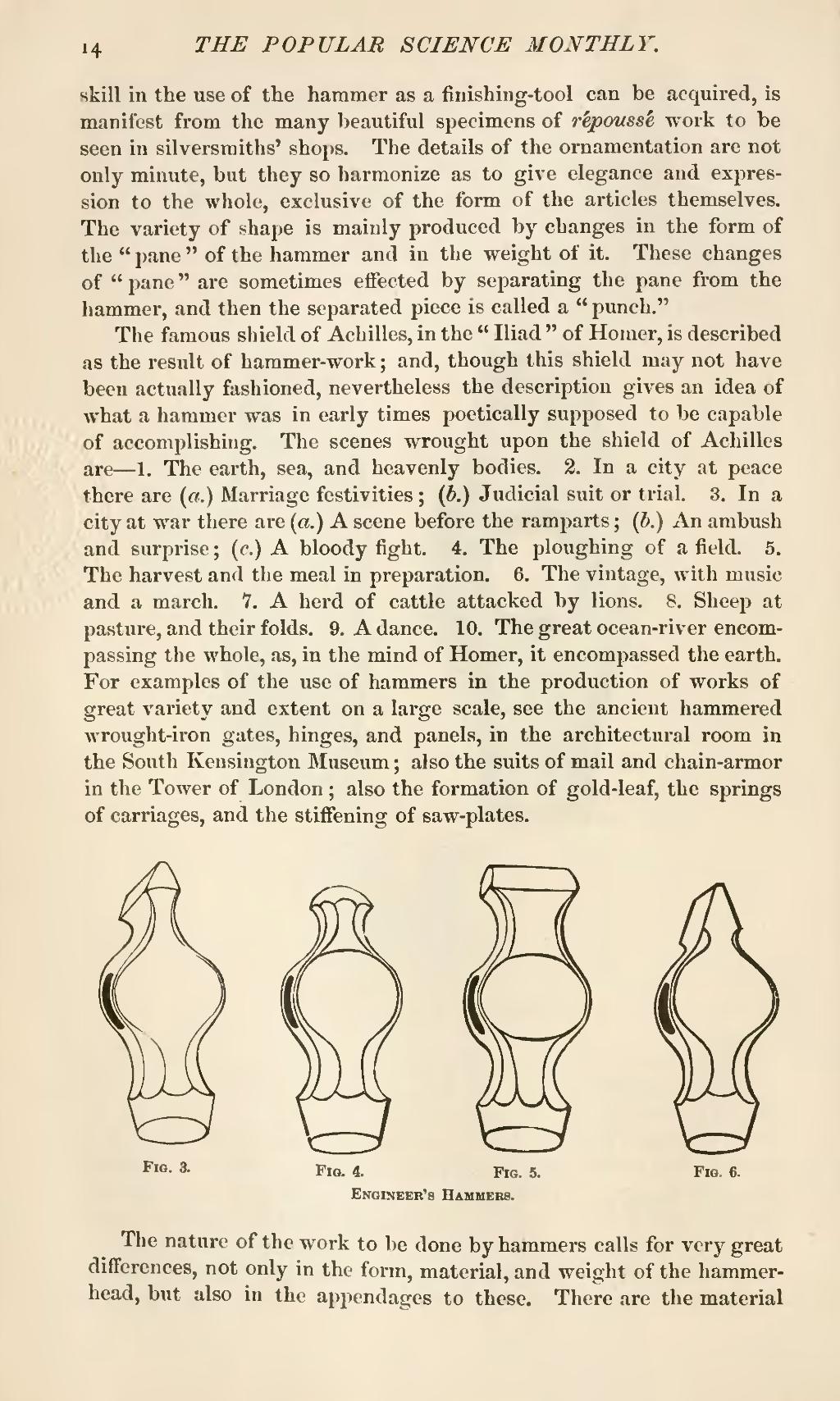skill in the use of the hammer as a finishing-tool can be acquired, is manifest from the many beautiful specimens of répoussé work to be seen in silversmiths' shops. The details of the ornamentation are not only minute, but they so harmonize as to give elegance and expression to the whole, exclusive of the form of the articles themselves. The variety of shape is mainly produced by changes in the form of the "pane" of the hammer and in the weight of it. These changes of "pane" are sometimes effected by separating the pane from the hammer, and then the separated piece is called a "punch."
The famous shield of Achilles, in the "Iliad" of Homer, is described as the result of hammer-work; and, though this shield may not have been actually fashioned, nevertheless the description gives an idea of what a hammer was in early times poetically supposed to be capable of accomplishing. The scenes wrought upon the shield of Achilles are—1. The earth, sea, and heavenly bodies. 2. In a city at peace there are (a.) Marriage festivities; (b.) Judicial suit or trial. 3. In a city at war there are (a.) A scene before the ramparts; (b.) An ambush and surprise; (c.) A bloody fight. 4. The ploughing of a field. 5. The harvest and the meal in preparation. 6. The vintage, with music and a march. 1. A herd of cattle attacked by lions. S. Sheep at pasture, and their folds. 9. A dance. 10. The great ocean-river encompassing the whole, as, in the mind of Homer, it encompassed the earth. For examples of the use of hammers in the production of works of great variety and extent on a large scale, see the ancient hammered wrought-iron gates, hinges, and panels, in the architectural room in the South Kensington Museum; also the suits of mail and chain-armor in the Tower of London; also the formation of gold-leaf, the springs of carriages, and the stiffening of saw-plates.

Fig. 3.Fig. 4. Fig. 5.Fig. 6.
Engineer's Hammers.
The nature of the work to be done by hammers calls for very great differences, not only in the form, material, and weight of the hammer-head, but also in the appendages to these. There are the material
